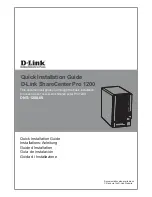
1-8
Cisco uBR924 Router Hardware Installation Guide
OL-0338-01 (3/2000)
Chapter 1
Product Overview
Cisco uBR924 Cable Access Router Description
•
The CMTS system administrator or appropriate personnel must have specified the policy
parameters for the Cisco uBR924 router and all computers and other CPE devices to be supported
at the subscriber site. See Cisco’s Network Registrar (CNR) product documentation for more
information.
•
The CMTS system administrator or appropriate personnel must have defined and pushed DHCP and
DOCSIS configuration files to the appropriate servers so that each router, when initialized, can
transmit a DHCP request, receive its IP address, obtain its TFTP and TOD server addresses, and
download its DOCSIS configuration file. Cisco IOS images and Cisco IOS configuration files must
also be prepared for subscribers who are purchasing services that require new software images and
advanced configurations.
Note
The CMTS uses the router’s unique MAC address for the cable interface to ensure
that the router downloads only the file(s) appropriate for the levels of service that
have been purchased.
•
If DHCP is also being used to provision the IP addresses used by the CPE devices at the subscriber’s
site, the DHCP server must be able to respond to those requests as well.
•
The CMTS system administrator must ensure appropriate databases are updated to activate and
support the new subscriber account in the provisioning, billing, and/or network management
systems in place for your network after each router is registered with the CMTS.
•
The following files should be prepared and available on the TFTP server:
–
DOCSIS configuration file—This is required for every installation. The DOCSIS configuration
file specifies the DOCSIS-mandated parameters, such as upstream and downstream
frequencies, as well as optional features, such as whether to download a new software image
or a Cisco IOS configuration file.
–
Cisco IOS image—If upgrading to a Cisco IOS image different from the factory default, that
image must be specified in the router’s DOCSIS configuration file and available on a TFTP
server, which is accessible either through the serial or the cable interface.
–
Cisco IOS configuration file—Unless the network administrator at the subscriber’s site is
manually configuring the Cisco uBR924 router through its command-line interface, a
Cisco IOS configuration file must be prepared that specifies the routing parameters required to
route data between the cable and serial interfaces. This file can specify any other optional
features that are desired. It must be made available on a TFTP server, which is accessible either
through the serial or the cable interface.
Data Operations
This section provides an overview of how data is transmitted to and from the Cisco uBR924 router
across the cable system’s HFC network. Figure 1-4 illustrates a typical broadband data cable system,
showing the network path between the Cisco uBR924 router and the CMTS headend equipment
(Cisco uBR7200 series universal broadband router or other DOCSIS-compliant CMTS).
















































